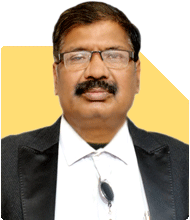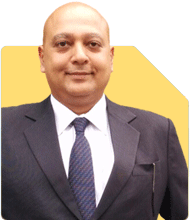Hi, earning 45k, age 28, female, i have 2 months girl child. I have 20k emi which need to be paid till 2028, we dont have any house or gold jewelry, my husband income 10k which we use it for rent, house expense.....I'm looking for any saving scheme for my child, for myself, insurance scheme.
Should i buy SGB for my child like 5 grams per year,
Below is my investment plan for my child, do u have any other alternative or better option,
PPF - 3000RS PER MONTH
SSY-3000RS PER MONTH
RD- 2000 PER MONTH
FD-5000 PER MONTH
for myself i didn't have any plan, can u suggest any mutual funds , sip...im really new to it.
Also, my job is not permenant, mnc. So please do suggest
Ans: Understanding Your Current Financial Situation
You are doing a great job managing your finances and planning for your child's future. At 28, with a monthly income of Rs 45,000 and a significant EMI of Rs 20,000, it’s essential to plan wisely. Your husband’s income covers rent and household expenses, which is helpful. Your goal to save for your child and yourself is commendable.
Current Investment Plan for Your Child
You are considering investing in:
Public Provident Fund (PPF): Rs 3,000 per month
Sukanya Samriddhi Yojana (SSY): Rs 3,000 per month
Recurring Deposit (RD): Rs 2,000 per month
Fixed Deposit (FD): Rs 5,000 per month
Let’s evaluate and possibly improve your plan.
Public Provident Fund (PPF)
Advantages:
Tax Benefits: Contributions are eligible for tax deductions under Section 80C.
Safety: PPF is backed by the government, offering secure returns.
Long-Term Growth: The lock-in period ensures disciplined long-term savings.
Disadvantages:
Lock-in Period: The 15-year lock-in can be restrictive if funds are needed urgently.
Limited Liquidity: Partial withdrawals are allowed only after certain conditions are met.
Sukanya Samriddhi Yojana (SSY)
Advantages:
Tax Benefits: Investments, interest earned, and maturity amount are tax-free.
High Interest Rate: Generally offers a higher interest rate compared to PPF.
Dedicated for Girl Child: Helps in securing your daughter's financial future.
Disadvantages:
Lock-in Period: Funds are locked until the girl turns 21, with some conditions for withdrawal.
Limited Flexibility: Contributions need to be consistent to keep the account active.
Recurring Deposit (RD)
Advantages:
Regular Savings: Encourages disciplined savings habit with fixed monthly deposits.
Guaranteed Returns: Interest rate is fixed and returns are guaranteed.
Disadvantages:
Lower Returns: Generally offers lower returns compared to other investment options like mutual funds.
Taxable Interest: Interest earned is subject to tax, reducing the effective returns.
Fixed Deposit (FD)
Advantages:
Safety: FDs are one of the safest investment options with guaranteed returns.
Fixed Interest Rate: Provides assured returns over the tenure.
Disadvantages:
Lower Returns: Returns may not always beat inflation.
Premature Withdrawal Penalty: Withdrawing funds before maturity can attract penalties.
Additional Investment Options for Your Child
Mutual Funds via Systematic Investment Plan (SIP)
Advantages:
Potential for Higher Returns: Equity mutual funds have historically provided higher returns over the long term.
Flexibility: You can start with a small amount and increase it over time.
Liquidity: Mutual funds can be redeemed easily compared to PPF and SSY.
Disadvantages:
Market Risk: Returns are subject to market fluctuations.
No Guaranteed Returns: Unlike FDs, mutual funds do not guarantee returns.
Consider investing a portion of your monthly savings in balanced or hybrid mutual funds. These funds invest in both equities and debt, offering a balance of risk and return.
Insurance Scheme for Yourself
Having adequate insurance is crucial for financial security.
Term Insurance
Advantages:
High Coverage, Low Cost: Provides a significant coverage amount at an affordable premium.
Financial Security: Ensures financial protection for your family in case of an untimely demise.
Disadvantages:
No Maturity Benefit: If you survive the policy term, no benefits are paid out.
Consider taking a term insurance plan that covers at least 10-15 times your annual income.
Health Insurance
Advantages:
Medical Coverage: Covers medical expenses, reducing the financial burden during health emergencies.
Tax Benefits: Premiums paid are eligible for tax deductions under Section 80D.
Disadvantages:
Premium Costs: Premiums can increase with age and health conditions.
Ensure you have a comprehensive health insurance plan that covers your family adequately.
Investment Plan for Yourself
Mutual Funds via SIP
You mentioned you are new to mutual funds. Starting with a SIP in a balanced or hybrid fund is a good choice. Here’s why:
Advantages:
Professional Management: Fund managers make investment decisions on your behalf.
Diversification: Mutual funds invest in a diversified portfolio of stocks and bonds.
Compounding: Long-term investments benefit from the power of compounding.
Disadvantages:
Market Risk: Returns can fluctuate based on market conditions.
Emergency Fund
Maintain an emergency fund equivalent to 6-12 months of your expenses in a savings account or liquid mutual fund. This ensures liquidity and safety for unforeseen circumstances.
Saving for Your Child’s Future
Sovereign Gold Bonds (SGB)
Advantages:
Safety: SGBs are issued by the government, ensuring security.
Interest Income: Earns interest over and above the potential capital appreciation.
Tax Benefits: No capital gains tax if held till maturity.
Disadvantages:
Lock-in Period: Has a lock-in period of 8 years, though early exit is possible after 5 years.
SGBs can be a good addition to your child’s investment portfolio for long-term growth and diversification.
Final Recommendations
PPF and SSY: Continue contributing to PPF and SSY for secure, tax-saving, long-term growth.
Mutual Funds: Start a SIP in balanced mutual funds for higher returns and diversification.
Term Insurance: Ensure you have adequate term insurance coverage for financial security.
Health Insurance: Get comprehensive health insurance for your family’s medical needs.
Emergency Fund: Maintain an emergency fund for unexpected expenses.
SGBs: Invest in Sovereign Gold Bonds for diversification and potential growth.
Conclusion
Balancing your investments between secure options like PPF and SSY and growth-oriented options like mutual funds will help achieve your financial goals. Ensuring adequate insurance coverage and maintaining an emergency fund are crucial for financial stability. Your proactive approach to planning your finances is commendable. Feel free to reach out for further personalized advice.
Best Regards,
K. Ramalingam, MBA, CFP,
Chief Financial Planner,
www.holisticinvestment.in
























